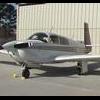LOP
-
Members Online
- raymondscott0321
- takair
- Scott Ashton
- Ragsf15e
- Ryankitfox
- spistora
- DEGWS
- eman1200
- Philip France 13
- ArtVandelay
- Flyler
- Jim F
- Graf_Aviator
- RescueMunchkin
- Willy T.
- 47U
- Rwsavory
- base363
- TCC
- Spmullis
- Scottknoll
- PeytonM
- bigmo
- Ibra
- MB65E
- Slick Nick
- ElkoRandy20J
- UMRPIlot8
- 201er
- theoriginalturk
- PT20J
- mgtrevor
- Wrench978
- chrisburdzy98


Recommended Posts
Join the conversation
You can post now and register later. If you have an account, sign in now to post with your account.